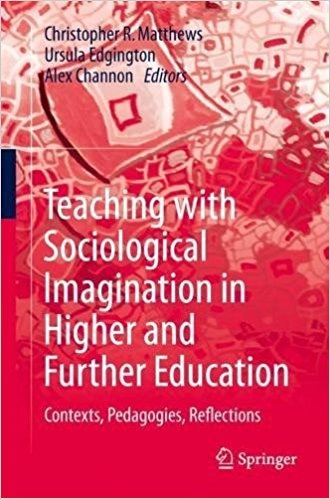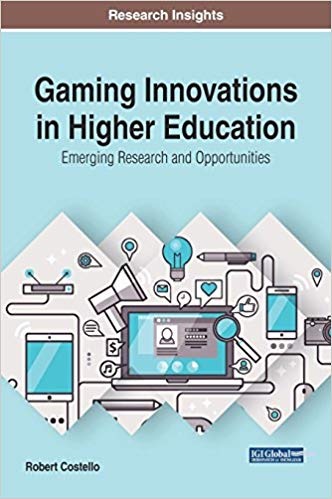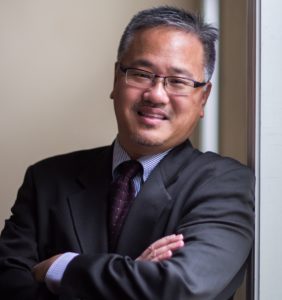student learning
Select an item by clicking its checkbox
A pedagogical community consists of at least three elements: the student, the professor, and the subject. The intersection of these three elements has the potential to create what Parker Palmer (1998) calls “a community of truth.” In order to create this community of truth in an online course, the instructor has ...
Date Reviewed: June 17, 2021
Gaming Innovations in Higher Education: Emerging Research and Opportunities is an essential reference work featuring the latest scholarly knowledge on the application of different gaming techniques within education to make learning activities ...
Gaming Innovations in Higher Education: Emerging Research and Opportunities is an essential reference work featuring the latest scholarly knowledge on the application of different gaming techniques within education to make learning activities more enjoyable and successful. Including research on a number of topics such as virtual laboratories, interaction media, and intrinsic and extrinsic motivation, this publication is ideally designed for academicians, researchers, and students interested in the benefits of providing an entertaining and intellectually-stimulating learning environment. (From the Publisher)

Teaching with Sociological Imagination in Higher and Further Education
Date Reviewed: November 29, 2018
With a laudable personal openness and deep dedication to both their field of sociology and the practice of teaching, editors Christopher R. Matthews, Ursula Edgington, and Alex Channon premise their volume Teaching with Sociological Imagination in Higher and Further Education on the idea that the skills of reflexivity and critical thinking are not only skills they stress in their courses to train and develop students, but also skills that can and should inform their own teaching practice. This reflective nature is the guiding purpose of their essay collection, and the contributors therein address that same principle from a variety of angles.
Such a reflexive approach, the editors write in their own section of the volume, “Introduction: Teaching in Turbulent Times,” is emphasized as “an exploration of the importance of teaching with sociological imagination, derived from a critical, reflexive engagement with our own situated practices, theorizations, and professional identities” (xvii). This openness regarding the positionality of the researcher and of the teacher is in large part what sets this volume apart. Briscoe (2005, Educational Studies 38, 23-41) noted that ideological positioning grants that while ideologies derive from one’s experiences and are influenced by one’s demographic positionality, the researcher (and in this case, the teacher) can have experiences that allow him or her to develop empathy with the other (33). The fact that Matthews, Edgington, and Channon foreground this idea sets the tone for the rest if the volume.
For instance, James Arkwright’s essay focuses on education equality as seen through the lens of inclusion and accessibility. The case studies Arkwright includes illustrate the issues and themes of students confronted with short- and long-term illnesses, as well as disabilities, and their experiences in institutions of higher or further education. These cases are built upon by his own story of being an educator who uses a wheelchair, through which he even more strongly makes his case for why the current state of inclusivity may seem positive, while the reality of those inclusive policies in practice could be improved to achieve a greater degree of equity.
Another demonstration of the efficacy of the volume’s premise is Pam Lowe’s entry on the role emotions may play in the learning experience. This topic is timely, as debates on trigger warnings and how or whether to address sensitive issues in class is ongoing. Lowe explores the complexity of educators’ attempts at balancing emotional and sensitive issues with academic objectivity.
Teaching with Sociological Imagination in Higher and Further Education is a valuable collection of topics from a variety of professional angles, all focused on how educators teach reflexivity and critical thinking, while practicing those same principles as educators. In doing so, Matthews, Edgington, and Channon have provided a strong and diverse contribution to the fields of sociology and education, as well as a demonstration of the value inherent in exploring, understanding, and practicing how these fields are interlinked.
“Doc, if I teach what you are talking about I’ll get fired!” “Talking about this in seminary is fine, but if I try to talk about white supremacy on my job –won’t I get fired?” “If I talk about racism and oppression in my church-I’ll get fired.” ...
I have a confession to make. For the longest time I have approached distance learning as the second best way to teach. I thought of it as a necessary evil in order to deliver theological education to those who could not receive instruction through the traditional face-to-face (hence F2F) ...



